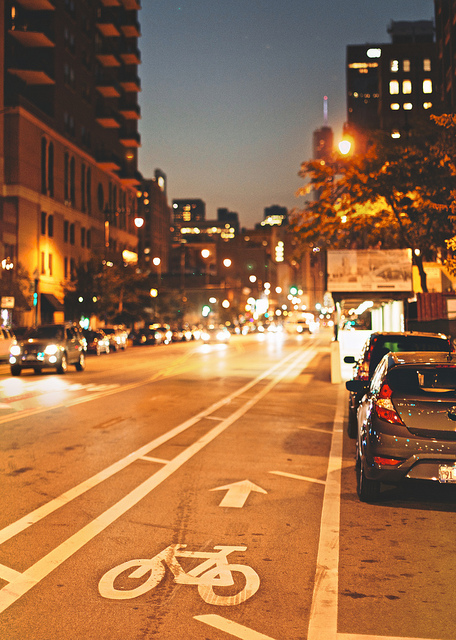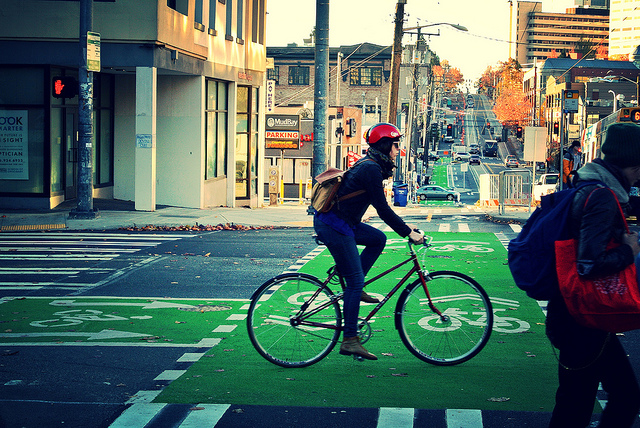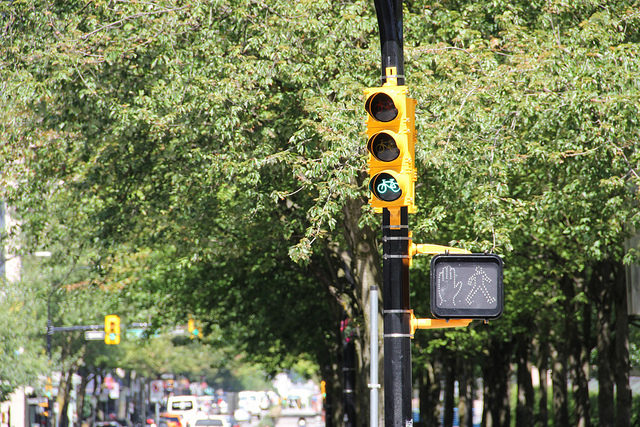The Laws of Cycling: What You Need to Know
Feb 24th 2018
Cycling law in the United States is broken down from Federal to State and City. We must abide by all of them, and it is important to know that each state and city's laws differ and many times do not align with each other. We've put together a very basic outline of what to know. However, this article should not be taken as legal advice- everybody should look up and know the law of the area they are in. Below is a good start:

Image courtesy of Bob Vonderau via Flickr
Bicycle registration
Find out whether your area requires you to register your bicycle. If not registered properly, a bike you purchased used could be sent to its original registered owner if your information is not current. Not registering your bike could result in a loss of the bike altogether.
Bicycle parking
Do not park your bike illegally. If it is not locked to a designated bike rack, simply chaining it to a nearby street pole may cause your bike to be confiscated by police.
If your bike has been ‘parked’ for a period of time, it might also be considered abandonded and be subject to confiscation or impoundment.

Photo Courtesy of SDOT Photos via Flickr
Traffic signs and signals
Cyclists are in a bit of a middle area when it comes to traffic laws. They must obey vehicle traffic laws as well as pedestrian laws in most states where applicable. Err on the side of caution and proceed with safety first in mind. Knowing your city’s specific traffic laws could mean the winning side in a court battle or insurance dispute.
Bicycle paths, Sidewalks, Crosswalks
Bicycle paths are for bicycles, and depending on your city, skateboards and scooters. They are not for pedestrians or automotive vehicles except when crossing or making a turn. If a bike path is present, cycling on the sidewalk is prohibited unless marked otherwise.
Pedestrians have the right of way in almost all normal traffic interactions. Both automotive drivers and cyclists must yield to pedestrians on the street. Some cities do not allow riding in crosswalks (you must walk your bike across) and automotive vehicles are not supposed to be stopped within the confines of a crosswalk.

Photo courtesy of Paul Krueger via Flickr
Areas Prohibiting Cycling
Some areas prohibit cycling, such as commercial areas, industrial areas, areas under construction. There are usually signs posted, but do not rely solely on these. Situational awareness is key here and you definitely should not trespass.
BUI
Biking Under the Influence. Some states treat cycling under the influence of alcohol and/or drugs the same as a DUI. This happens most often in cities/states that considers bicycles legally as a vehicle. This will get your drivers license suspended as well as a heavy fine and other punishments according to local and state law.
A taxi/Uber/Lyft/rideshare fare is always cheaper than a DUI. 10 out of 10 times the risk is not worth it.
